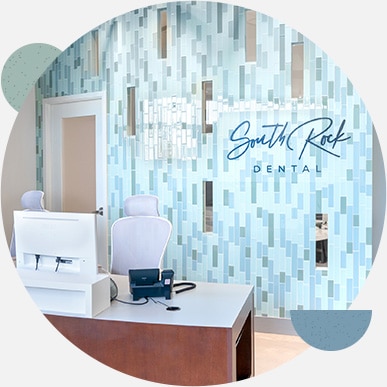Bone preservation after a tooth extraction can prevent bone loss and bite changes. It also creates a solid foundation to support a dental implant in the future.
Promoting a Healthy Jawbone
When a tooth is removed, the supporting bone is no longer stimulated, signaling to the body that it’s not needed. Over time, the bone shrinks and deteriorates. Bone loss also commonly occurs because of severe periodontal disease, or periodontitis.
As the bone is resorbed, it affects your oral health, may cause your facial features to sag and makes it difficult to place a dental implant. Bone preservation involves using a bone graft to rebuild lost bone and maintain the jaw’s stability and strength.
The Bone Preservation Process
01
Come in for an Exam
Dr. Sundeep Chohan, General Dentist, will evaluate your oral health and bone conditions by taking x-rays and a wellness scan and performing an exam. If a tooth extraction and bone preservation are needed, she’ll explain the reasoning, go over what to expect and answer any questions you have.


02
Have Your Tooth Extracted
Usually, the bone preservation procedure is done immediately following a tooth extraction. If this is the case, we’ll get you comfortable in a private treatment room before administering local anesthesia and, if needed, sedation. Then, Dr. Chohan will remove your tooth.
03
The Bone Graft is Placed
Dr. Chohan will make a small incision in your empty tooth socket to access the bone. She’ll place the grafting material inside. Lastly, she’ll cover the graft with a collagen membrane to allow it to heal.


04
Your Body Takes Care of the Rest
The bone graft acts like a scaffold. Over the course of the next few months, your body will replace the grafting material with its own bone. Once the healing period is complete, you’ll be able to start the dental implant process if you’d like.
Benefits Of
Bone Preservation

Maintains Bone
Bone preservation preserves bone quantity, quality and contours. This allows for dental implant placement, enhances aesthetics and keeps the jawbone strong.
Improves Oral Health
Restoring or maintaining the teeth-supporting bone can improve your oral health by helping ward off further tooth and bone loss.
Supports Facial Structure
Bone preservation helps to maintain support for your skin and facial features and prevents facial collapse.
What is bone preservation?
Bone preservation is a minor oral surgical procedure usually performed immediately following a tooth extraction. Our South Surrey dentist places grafting material in the extraction area or wherever bone is deficient. The material serves as a scaffold that your body builds new bone around.
The process preserves your jawbone, preventing the deterioration that happens after a tooth is removed. This ensures you’ll be able to get a dental implant in the future and also provides support for your facial structure.
Where does the bone grafting material come from?
Bone particles for a graft can come from animal or human donors, your own body or synthetic materials. While it will depend on your case, we generally use allografts for our South Surrey bone preservation procedures.
Allografts are made of donated bone particles that have gone through a rigorous sterilization process in a lab. The material is safe and biocompatible. Additionally, using an allograft means you won’t need another surgical procedure to get grafting material from somewhere else on your body.
Does bone preservation hurt?
No, bone preservation doesn’t hurt. Dr. Sundeep Chohan, General Dentist, will give you a local anesthetic, so you’ll be numb during the grafting procedure.
After bone preservation surgery, you might be a little sore. Discomfort is usually mild and only lasts for a few days. Holding ice on your face in the affected area and taking an over-the-counter pain reliever will help.


